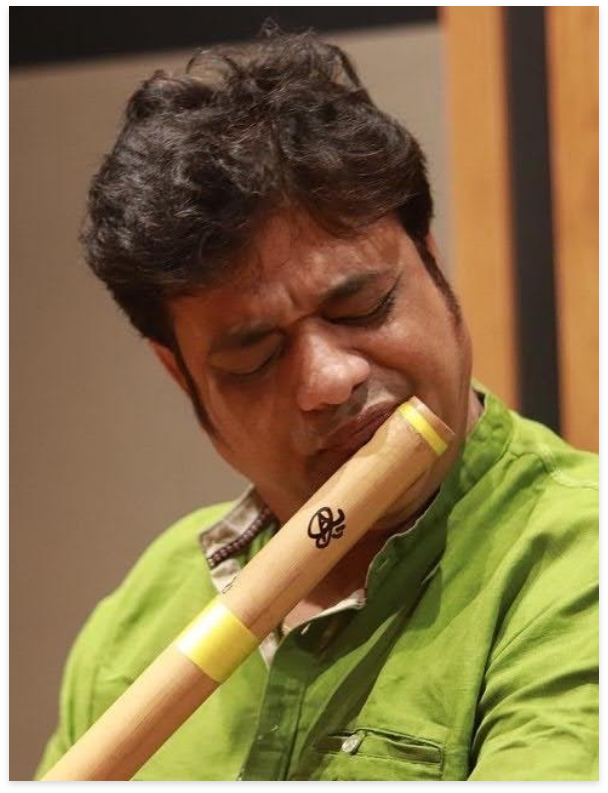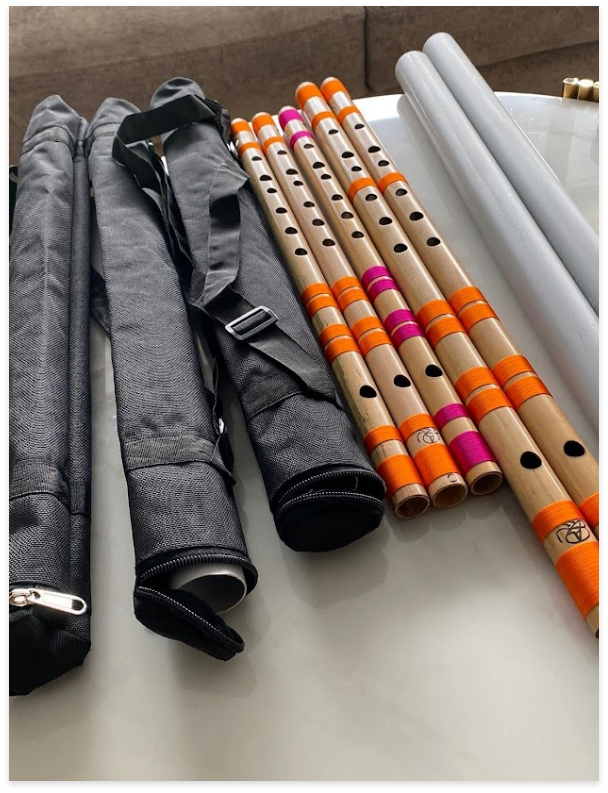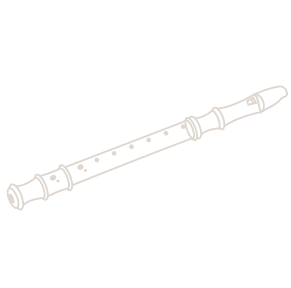Shopping Cart
Shopping Cart
No products in the cart.
Bamboo Reverence
Home / Bamboo Reverence

Call Of The Divine
Holding an exceptionally revered position in India for its close association with Lord Krishna, the bamboo flute is one of the oldest musical instruments known to man. With its mythological connections, the sound of Krishna’s flute represents the call of the divine for individual souls. Stories of ras-liIa come to mind at the mere mention of the flute. Some of these stories form the core idea of hundreds of songs and ragas (musical notes) in Hindustani classical music.
However, many agree that the flute came into existence much before that. They believe that the origin of the flute was in the jungles where pests and insects carved holes into bamboo sticks; when wind blew through these bamboo trees, the result was sweet notes. The ‘bansuri’, bans (bamboo) plus sur (musical note), is usually a long bamboo pipe with six or seven holes punched into it. While one end of the flute is placed on the lower lip to blow, the fingers manipulate the sound produced by exposing and covering the holes.
For centuries, after being the principal pastoral instrument, it was only the genius of late Pandit Pannalal Ghosh that elevated the status of the flute. According to musicologists, two legendary incidents changed young Pannalal’s life. The first one happened at the age of nine while he was swimming, looking for a stick, when he accidentally chanced upon a bamboo stick that was carved into a flute. A couple of years later a sadhu (saint) asked him to play the flute and told him that music would be his route to salvation.
The flute has undergone many innovations; the major one in design took place during the 20th century, when it branched out from being a high-pitched folk instrument. This brought it at par with other Indian classical instruments such as sitar (an Indian stringed musical instrument) and tabla (a musical instrument comprising two hand drums). After a lot of experimentation, the new flute involved a change in design where much bigger bamboo pipes were used to produce a heavy and rich baritone sound, the type of sound that was till then unheard of. Along with this an additional seventh hole was introduced mainly to facilitate the meend (glide) and to play the fourth and fifth notes without breaks.
Classical Notes
There have been a few unforgettable exponents of the Indian bamboo flute. To name a few after Pandit Pannalal Ghosh-Pandit Vijay Raghav Rao, Pandit Hariprasad Chaurasia, Raghunath Seth and Pandit Ronu Majumdar. Pandit Hariprasad Chaurasia, over the years, has appreciably extended the expressive possibilities on the Indian flute playing by way of his technique and his distinctive adaptation of alaap andjod.
Bansuri virtuoso Pandit Ronu Majumdar, an energetic and indefatigable performer also popular with the younger generation for his creative improvisations in Hindustani classical as well as fusion music-feels that flute is the one instrument that comes closest to the vocals after violin or sarangi (a bow-string instrument).
“Bansuri is the closest for vocal, as the sound comes from blowing air through the lungs, while violin and sarangi are played with the hands. As far as sound is concerned, every instrument• has its technical limitations, but it’s up to the performer to overcome them. Simultaneously there are ragas, which can arouse the desired emotions and can create magic when played on the flute because of the vibrato and other effects such as Kan and Upkan (grace notes), states Majumdar.”
Like the genius of Pandit Pannalal Ghosh, Pandit Ronu Majumdar is also credited as the inventor of the shankh bansuri. It derives its name from shankh, meaning shell, as the sound produced is like that of a conch shell. Three- and-half-feet long and made up of two bamboo sticks, the shankh bansuri has been given extra holes. “It took me around one and half years to build this piece after a lot of experimentation. The objective behind designing the shankh bansuri is to reach an octave lower, which is tough to achieve on the normal bansuri; it is also useful for the alaap.”


Acoustic Harmony
However, it’s the work and the craftsmanship of the flute maker combined with the performer’s practice and control that make for an extraordinary performance. Flutes are made from cinchor, a type of bamboo, which grows in the interior forests Of Assam. Straight bamboo-which is around three to four years old-having the proper diameter is used. Once the bamboo is cut, it is dried and treated for 3-4 years so that it is appropriately seasoned.
The correct notes can only be attained by piercing the weathered bamboo with a hot iron rod with precise and calculated measurements. Says Anand Dhotre, one of India’s finest flute makers: “It easily takes around three days to make a concert flute for professionals. It needs a lot of concentration, as unlike other musical instruments it cannot be tuned or repaired. Despite a lot of trial and errors I am still trying to achieve perfection. My father, Ramchandra Dhotre, made flutes for over 50 years and now I am hoping that after me, my son would carry forward the heritage.”
The effort that goes into the making of a flute can only be honored and matched by a trained flautist who has put in years of riyaaz (practice), as the bamboo flute is the meeting point of the human and the celestial.

5 Benefits of Flute



Increases Concentration

Reduces Stress

Intense Meditation

Better Sleep at night

